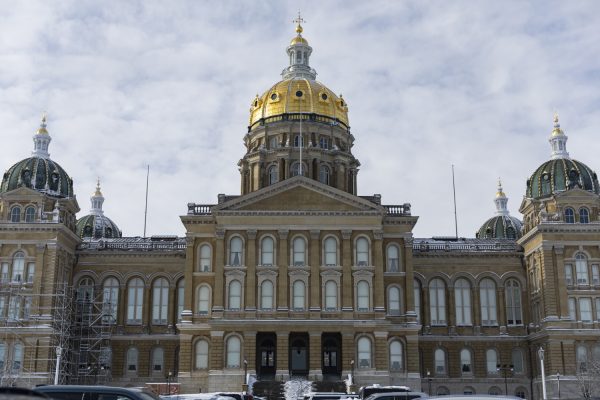Opinion | People need to know how widespread their power outages are
The current reporting process for power-outage information is not adequate for a world where outages are increasingly more common.
MidAmerican Energy Company is seen in Iowa City on Monday, Nov. 1, 2021.
January 23, 2022
Power outages can already be a scary and harsh experience, but not knowing when it will end makes it that much worse. People need more access to information about how widespread a power outage is and approximately when it will end.
On Jan. 12, the power went out in my house at around 11 a.m. As it was during the day and no storm loomed overhead, there was no way to know how widespread it was or how long it was going to take to fix it.
Toward the end of the outage around noon, I saw an article from my former high school news team, wsspaper.com, that showed that the power outage was widespread across Iowa City. The power came back on 20 minutes later.
The MidAmerican website, however, showed that only one person was reporting an outage over the many times I viewed it during the outage.
The current reporting system for MidAmerican, and other electric companies throughout the country, involves people reporting outages themselves. This works on small scale outages but not for larger ones, as the map does not reflect how many people were affected.
One solution would be to get more people in the loop of reporting outages themselves. Most of Iowa City’s residents can call 800-799-4443, or sign into the MidAmerican website to report an outage. This way, that map is provided with more up-to-date information while still using the current system.
Another solution that many energy companies have, but don’t use, is sensors. While the sensors currently detect power outages for the energy companies themselves, they do not use them for the outage maps. The sensors are placed on the electrical equipment itself, so if a power line goes down, they know when and where it happened.
The problem with the current outage map system is one that will continue to get worse as time progresses: Climate change will progressively cause more natural disasters and other weather effects, impacting more outages.
Additionally, an increasing demand for electricity is causing a strain on the power grid. As the population increases and smart devices drive up power demands, people will use more electricity.
If people start to mass switch to electric cars, the current power grid will not be able to handle that much demand, and it will cause more outages.
The U.S. power grid is also aging, with much of the electrical equipment built over 50 years ago. As people push for more clean energy and use the power grid more, its age will truly show as more of it will break and further cause more power outages.
With the power grid likely to be under more strain in the future, whether from worsening weather or an demand for it, people need a map that best reflects ongoing power outages. Then, people would have the information and ability to better plan what they need to do to make it through.
Columns reflect the opinions of the authors and are not necessarily those of the Editorial Board, The Daily Iowan, or other organizations in which the author may be involved.














